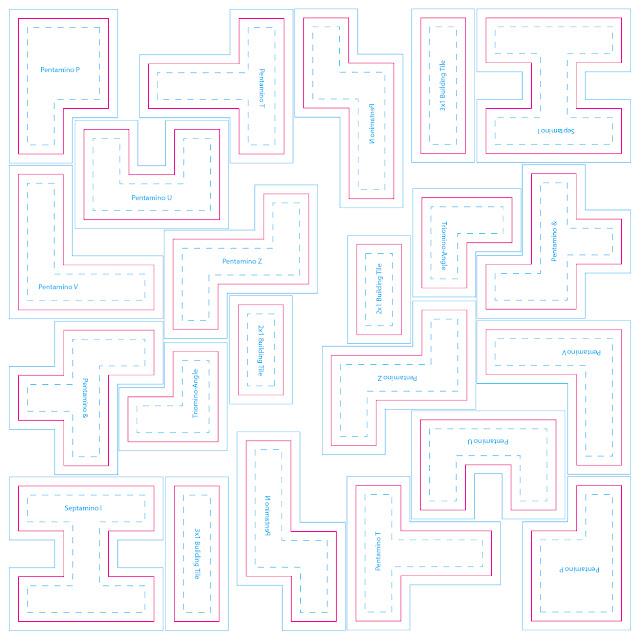Designing Punch Out Components for Board Games
These components go by many names in the industry — Chipboard, Punchout, Punch Sheets, or Cardboard — but I typically just say “punch board” out of habit. They all refer to thick cardboard pressed between two glossy color laminate sheets on either side. A factory can create custom dies that perforate these sheets into different patterns, then the resulting tokens can be punched out of the sheet. (Packaging and shipping tokens still connected to a sheet protects them in transit until they’re purchased.)
Before getting too far along in your design process, consult with your factory representative to confirm they are able to achieve your requests. They’ll offer solutions that best suit your needs at a budget you’re able to sustain. They will also explain how they prefer to have their files delivered.
Assume all punch board components require designated bleed, trim, and safe zones just like a card design. However, the thickness of the sheet determines how strict those margins need to be. Typically a factory will demand need a minimum 3mm bleed and safe zone, meaning that there is a minimum of 6mm between any two components.
Here are some samples of how you might format art for some components and the errors you may encounter in doing so.
COIN
- Problem: The coin’s shiny details have stopped at the trim line, meaning that they will sometimes be cropped-off-center.
- Solution: Either extend the shine all the way to the bleed line OR add an outer border so the shine stops within the safe margin.
WATER TILE
- Problem: This water tile has small landmasses that sit entirely between the trim line and bleed line, meaning they will appear inconsistently across various tiles.
- Solution: Either make the landmass more solid and contiguous so it can tolerate miscuts OR make the water texture more homogenous without high-contrast details.
ROCKET
- Problem: The rocket ship’s artwork is entirely cropped to the intended trim line, meaning any miscuts will draw more attention.
- Solution: Extend the hull artwork all the way to the bleed line, removing any details that would be outside the safe margin. Use angles perpendicular to the trimmed edge where possible, so vertical and horizontal mis-registrations aren’t as noticeable.
CAR:
- Problem: The car has a similar problem as the rocket, however there is an alternate solution in this case.
- Solution: Rather than extend the artwork, you can expand the trim line so the safe zone margin roughly matches the car’s silhouette. Outside the car, you can add simple landscape and sky textures to fill in the space.
All of these bleed-extensions may look strange on the page, but they’ll look fine when the component is punched out. Without these extensions, misalignments will be very obvious and look amateurish.
For artwork depicting people or animals, it’s safer to not make the trim line hug the exact shape of the artwork. Instead, you must imagine the artwork’s silhouette as your safe margin and add several mm around that shape. Round out any sharp internal recesses, otherwise an especially deep notch might mar the art. You can put whatever you like behind the artwork to fill in the extra space, like in the car example above. You may leave it blank white or add a background. Just make sure it’s indistinct enough that it won’t make misalignments too obvious.
For example, to save on production expenses, the four Elemental Lords in "Gates of Mara" all use the exact same die cut pattern. Artist Nastya Lehn illustrated each of the lords in similar poses that would fit within the safe zone of that die cut. On the base of the figure, you’ll see that we duplicated the icons on both halves of the circle since the standee would be blocking line-of-sight for some players.
Taking this one step further, your trim lines may have no correlation with the artwork at all. Instead, the shape itself can have embedded mechanical relevance in the gameplay. For example, the standees in "Gates of Mara" may only be placed in certain geometric spaces matching their base. A square base can only be placed on a square space, a circle base on a circle space, and so on. To help recognition, the tops of the standees are cut to resemble their bases. The circle bases also have round tops. The square bases also have flat tops. The triangular bases have pointed tops.







Comments
Post a Comment